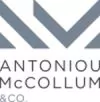The framework governing the registration and protection of trademarks in Cyprus consists of the Cyprus Trademark Law, Cap. 268, as amended, and subsidiary legislation enacted from time to time.
Lifecycle of an application for the registration of trademarks
Applications for the registration of trademarks in Cyprus of different classes must be made individually, despite the mark being identical for each class filed and they are addressed to the Registrar of Trademarks, which is the competent authority for the registration of trademarks in Cyprus. The application procedure itself is an activity reserved for practicing advocates, appointed by the intended applicant to file the application.
The application for registration of a trademark is examined by the Registrar of Trademarks Office on both absolute and relative grounds. The outcome of a trademark application will either be the unconditional acceptance of the registration, conditional acceptance of the registration or rejection.
Following examination and approval of registration, the approved trademark is published in the Official Gazette. Any person within two months of such publication may give notice of opposition to such registration, to be filed with the Registrar's Office. The applicant may file a counterstatement to the opposition and the Registrar will receive the arguments of both parties with a view to arriving at a decision. The unsuccessful party is able to file recourse in court against the Registrar's decision.
If registered, the validity of a trademark commences as of the date of the application to register the trademark. The first period of validity lasts for seven years, upon the expiration of which renewal is necessary and thereafter this period is every four years.
Types of trademarks
Directive (EU) 2015/2436 of the European Parliament and of the Council of 16 December 2015 to approximate the laws of the Member States relating to trademarks (the "Directive") contains provisions further approximating the laws of the Member States relating to trademarks, with regard to both substantive and procedural matters.
One of the key changes brought about by the new legislative instruments is the elimination of the graphic representation requirement from the definition of both EU and national trademarks. Such elimination gives rise to the possibility of accepting new types of trademarks, filed in formats not previously provided for by national or regional systems.
► Word
A trademark consisting exclusively of words or letters, numerals, other standard typographic characters or a combination thereof.
► Figurative
A trademark where non-standard characters, stylisation or layout, or a graphic feature or a colour are used, including marks that consist exclusively of figurative elements or a combination of verbal and figurative elements.
► Shape
A trademark consisting of, or extending to, a three-dimensional shape, including containers, packaging, the product itself or their appearance.
► Position
A trademark consisting of the specific way in which the mark is placed or affixed on the product.
► Pattern
A trademark consisting exclusively of a set of elements which are repeated regularly.
► Colour
A trademark that consists (i) exclusively of a single colour without contours; or, (ii) exclusively of a combination of colours without contours.
► Sound
A trademark consisting exclusively of a sound or combination of sounds.
► Motion
A trademark consisting of, or extending to, a movement or a change in the position of the elements of the mark.
► Multimedia
A trademark consisting of, or extending to, the combination of image and sound.
► Hologram
A trademark consisting of elements with holographic characteristics.
Revocation
Any interested party may apply to court or to the Registrar to have a registered trademark removed from the register in respect of any goods or services for which it is registered, on the grounds relating to the trademark not being applied for or used in good faith.
Unless the applicant for revocation has been allowed to register an identical or similar trademark in respect of the relevant goods or services, or the court or the Registrar is of the opinion that it might properly be permitted to do so, the court or registrar may refuse an application for revocation in relation to any goods or services if it is shown that there was good-faith use of the trademark in respect of the goods or services for which the mark is registered before the relevant date or during the relevant period.
For the purposes of proving use, use of a trademark which varies from the mark as registered is acceptable as long as this variation does not substantially affect the character of the trademark. The use of a trademark solely for export purposes is also acceptable.
Infringement and passing-off
Owners of registered trademarks can commence court actions for both infringement and passing-off. Under applicable law, the owner of a registered trademark has the exclusive right to use the mark in relation to the goods for which it is registered.
This right is infringed where an unauthorised third party uses a mark that is identical to the registered mark – or so closely resembles it as to be likely to deceive or cause confusion. This use must be done in the course of trade in relation to any goods for which it is registered or in relation to dissimilar goods if the registered trademark is well known, and in a manner likely to be regarded either as:
► use as a trademark
► importing a reference to someone who is the owner or authorised user of the mark, or to goods with which such person is connected in the course of trade.
The owner of the registered trademark bears the burden of proving that the resemblance is deceptive. Anyone claiming damages for unauthorized use of a sign or mark not registered as a trademark will only be able to file proceedings for passing off, a tort under Cyprus law.


